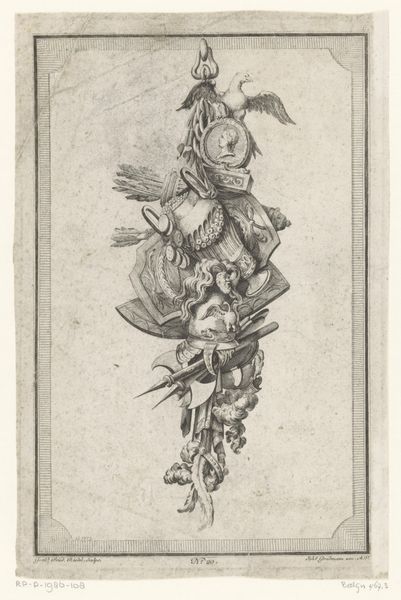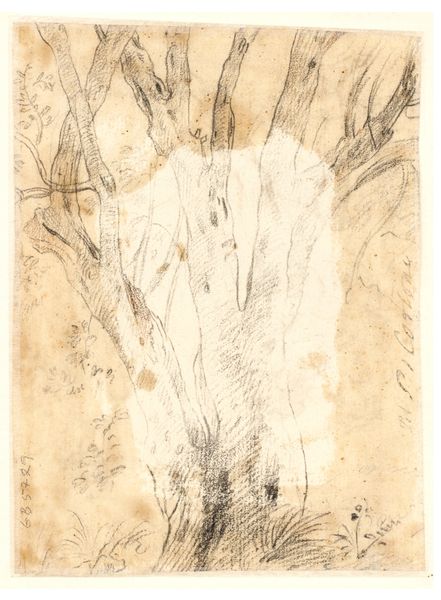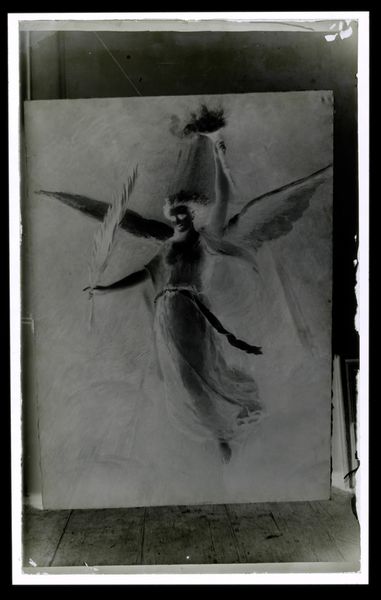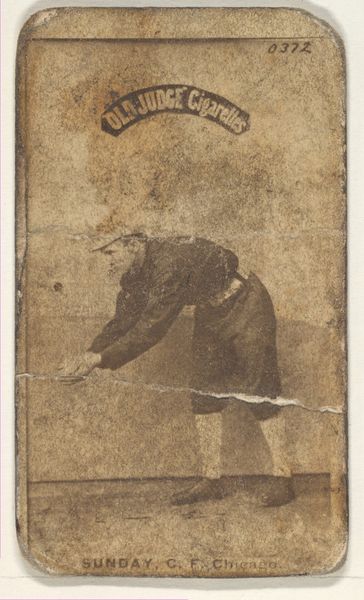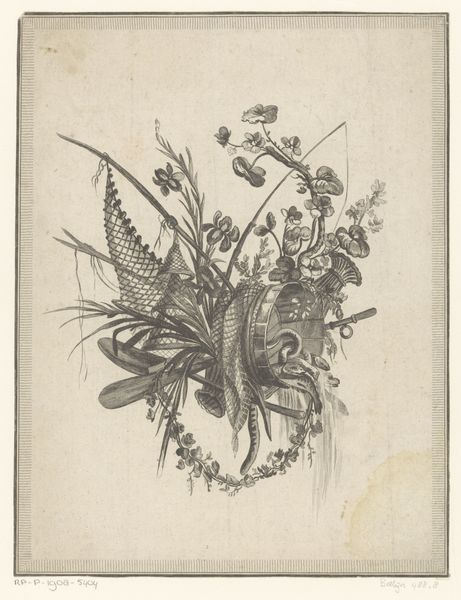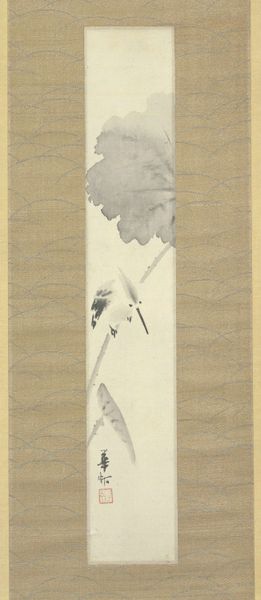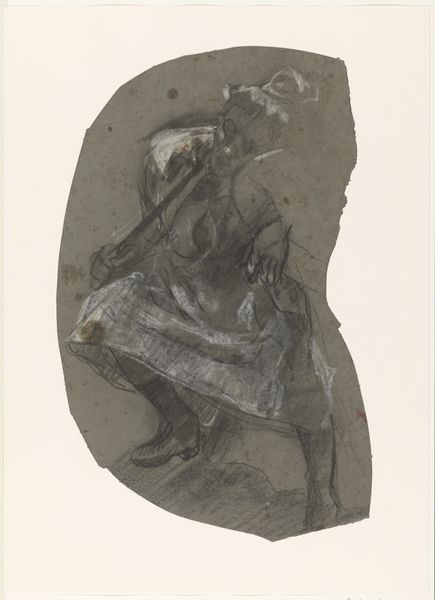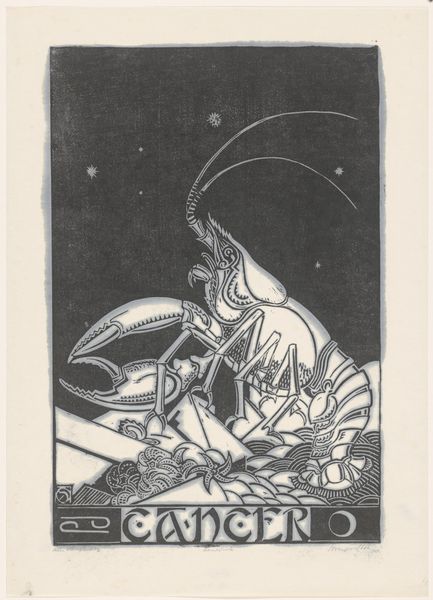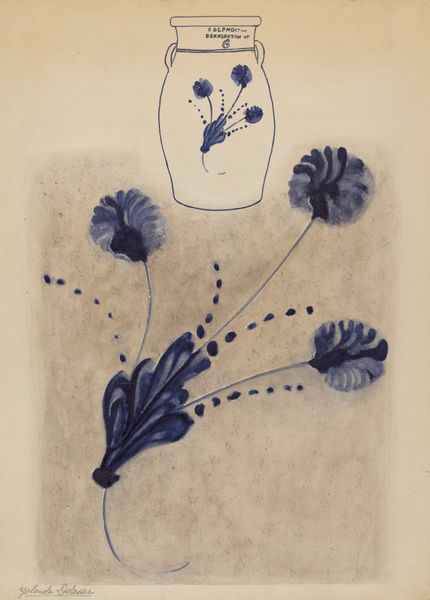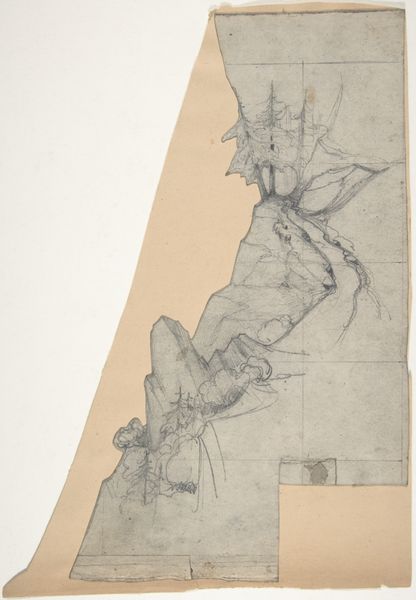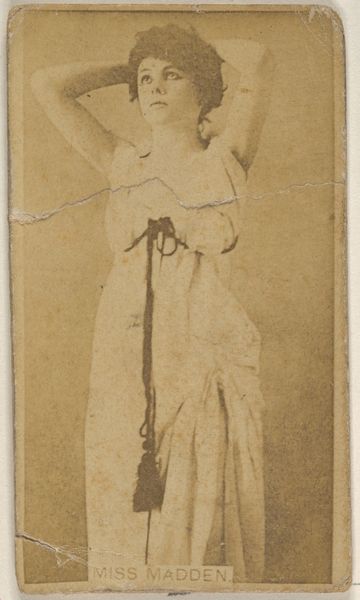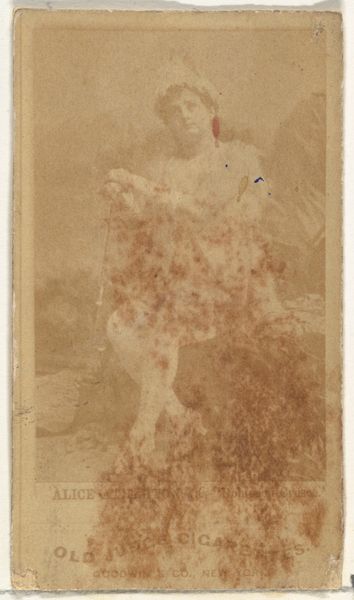
Niels Klims nedfart; udenom ham svæver kommenskringlen 1743 - 1809
0:00
0:00
drawing, pen
#
drawing
#
neoclacissism
#
figuration
#
coloured pencil
#
pen
#
history-painting
Dimensions: 150 mm (height) x 98 mm (width) (bladmaal)
Nicolai Abildgaard made this print, "Niels Klims nedfart; udenom ham svæver kommenskringlen," sometime in the late 18th century. It's an etching, meaning the artist used acid to bite lines into a metal plate, which was then inked and pressed onto paper. Look closely, and you'll see the fineness of the etched line. Abildgaard would have carefully controlled the depth of the lines to achieve the tonal variations, and he would have printed this in a single color of ink, probably brown or black. The image illustrates a scene from Ludvig Holberg’s satirical novel, and the swirling lines convey the protagonist's dizzying descent into the earth. Prints like this were relatively inexpensive and widely circulated. They brought art to a broader public, connecting the world of skilled craft to the expanding world of publishing and consumption. The act of making such an etching is intensive and time-consuming, but it results in multiples, and that dramatically changes the economics of art. So, next time you see a print, think about the labour involved, and how that relates to the artwork’s broader social context. Recognizing those factors helps us appreciate the true value of the image before us.
Comments
No comments
Be the first to comment and join the conversation on the ultimate creative platform.
